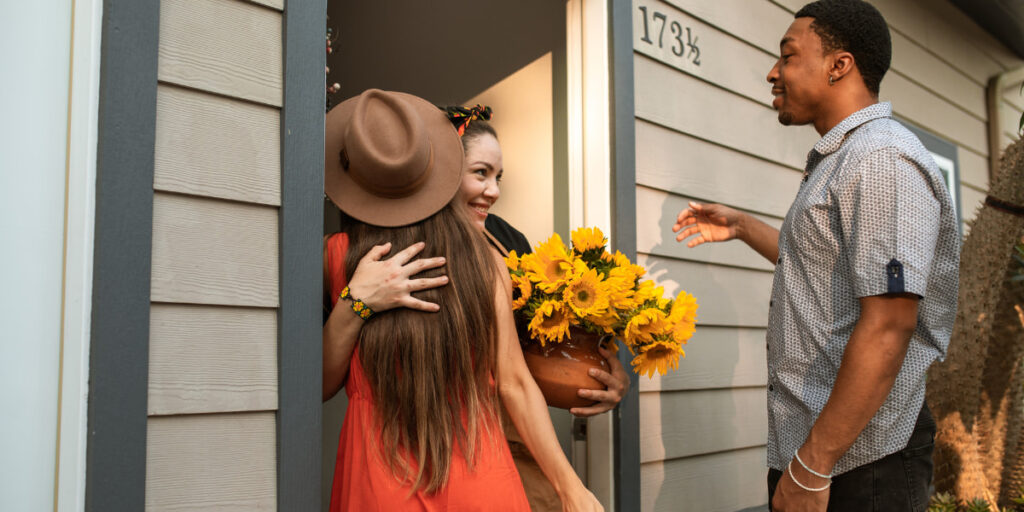
Celebrating a new home carries a special joy, and for many, housewarming etiquette is a unique dance between tradition and personal style. Welcoming friends or stepping into someone else’s space for the first time sparks anticipation—and a few subtle social cues.
The way you host or attend a housewarming can echo far beyond the event itself, shaping friendships and weaving you into the fabric of your new neighborhood. Invitations, gifts, and introductions all matter in the gentle art of these gatherings.
Whether you’re planning to throw your own event or planning to join someone else’s, you’ll find plenty of actionable, realistic tips here. Let’s explore the modern rules, scripts, and small gestures that let anyone handle housewarming etiquette like a pro.
Guests Make the Mood: Invitations and Early Interactions Set the Tone
Start a memorable housewarming by sending clear, warm invitations, using direct language that eliminates confusion. Mention the date, address, and any food or drink arrangements. Set expectations: “Join us for snacks and a quick toast between 3 pm and 5 pm.”
Success begins with communication. Using a group text for casual events or printed cards for formal affairs communicates your intention. Housewarming etiquette flourishes when everyone knows exactly what to expect, minimizing awkwardness for both host and guest.
Setting the Scene So Guests Feel Welcome
When guests arrive, greet them at the door with a relaxed smile and open body language. If you’re attending, offer your coat and a simple, “Congratulations on your beautiful new place!” These first minutes shape the entire evening.
Use nametags or a brief round of introductions if multiple friend groups are meeting. “This is my friend Dana from work, and over here is my cousin Rudy,” helps break the ice for everyone, setting a style that feels inclusive.
Hosts can give quick tours early, not mid-party. Share, “Let me show you the kitchen—just watch out for the paint cans!” so guests feel oriented and understand where to socialize or relax.
Practical Invitation Do’s and Don’ts
Invite guests with enough lead time—two weeks is ideal. “We’re settling in and would love to have you on the 20th,” is clear and manageable for most schedules. Avoid mass last-minute messages that signal a lack of planning.
Be mindful of plus-ones. “Feel free to bring your partner or a close friend,” sets boundaries politely. For families, clarify kid-friendly status: “We’ll have coloring books for little ones!”
RSVPs matter. Hosts can nudge with, “If you can make it, let me know by next Friday.” Respond promptly to any invitation, and if you must decline, give a brief, appreciative reason, showing respect for everyone’s plans.
| Invitation Type | When to Use | Best Practice | Takeaway |
|---|---|---|---|
| Text Message | Casual, spontaneous | Group chat for friends | Quick, informal—best for last-minute gatherings |
| Semi-formal groups | Include directions and RSVP link | Great for work colleagues or larger circles | |
| Printed Card | Special occasions | Hand-deliver for impact | Sets a formal, unforgettable tone |
| Event App | Tech-savvy guests | Include schedule, updates | Allows easy reminders and quick RSVP tracking |
| Phone Call | Elderly guests or close friends | Personal, direct invite | Makes the invitee feel especially valued |
Thoughtful Housewarming Gifts: Choices That Feel Just Right
Picking the right gift shows attentiveness and reads the host’s style. For housewarming etiquette, bring something useful or meaningful: a plant, a cozy throw, or a handmade card with a grocery store gift card inside.
Match the gift to the relationship. Neighbors might present a pie and welcome note, while a childhood friend could wrap up quirky kitchen gadgets. When in doubt, encourage, “Let’s toast to your new adventures!” as you hand over your offering.
Gift Giving That Reflects Modern Values
Gift giving has shifted beyond generic bottles of wine. Consider allergies, dietary restrictions, or personal beliefs. If your friend is vegan, bring an artisanal candle or indoor herb garden kit instead of cheese boards.
- Pick items that have clear utility for their new life: a set of silicone spatulas, a potted succulent, or a woven basket for mail.
- Favor small-scale, handmade gifts, especially for minimalist homes. A mason jar of homemade jam speaks volumes.
- Message the host beforehand: “Is there something you need? I’d love to be helpful.”
- Wrap mindfully, skipping glittery wrap if there are small kids or pets in the house.
- Include a short, hand-written note: “Wishing you warmth and laughter in your new space—Ben” has lasting charm.
A good gift fits seamlessly into their home and avoids creating extra clutter. Listen for hints at what’s needed when you chat before the event. Authenticity trumps extravagance every time.
When and How to Unwrap Gifts
Hosts can say, “We’ll open gifts after dessert so everyone can visit,” keeping the party’s pace relaxed and no one left out. Avoid unwrapping as soon as you receive gifts, which can interrupt the flow.
- Wait until a natural break in the evening before opening presents so you can give each one your full attention.
- Say thank you immediately when you do unwrap, addressing both the gift and the gesture.
- Share a story with guests, like “We needed a kettle—now tea time is sorted!” to add a personal touch.
- Set gifts somewhere visible, so all attendees can admire and congratulate.
- Send a note or quick text of thanks the next day—simple housewarming etiquette strengthens bonds.
When you express gratitude openly, both givers and other guests feel their contributions matter and everyone enjoys a sense of shared celebration.
Food, Beverages, and Special Diets: Smooth Hosting Without Stress
When you cover the basics—welcoming snacks, drinks, and being mindful of allergies—everyone relaxes. Simple platters work best: deviled eggs, fruit skewers, or hummus and pita keep conversation flowing without fuss.
Stocking a few beverage choices respects every guest. A pitcher of lemonade next to sparkling wine invites all to toast, catering to both adults and those skipping alcohol. Housewarming etiquette is about small, inclusive details.
Accommodating Dietary Needs Without Spotlight
Discreetly label foods and ask about major allergies in advance. As a host, say, “Let me know if you or your family avoid anything—we’ll have plenty for everyone.” Keep allergy-friendly snacks separate with clear signs.
Hosts can quietly mention, “We have vegan and gluten-free dips on the left—just ask if you don’t see what you need.” This avoids putting anyone on the spot while ensuring all guests feel seen.
Avoid making one guest the center of attention due to their diet. For example, don’t announce, “This is Emily’s dairy-free cheese!” Instead, invite Emily to find what she enjoys at her own pace.
Serving and Sharing with Ease
Set up a serve-yourself station to keep mingling easy. Arrange plates, utensils, and napkins at one end of the table so guests can help themselves as they wish, promoting light, stress-free movement around the space.
For drinks, a big jug of iced tea with lemon slices signals hospitality. Displaying cups and ice nearby encourages guests to help themselves, freeing the host to socialize and making everyone more comfortable.
Use reusable serveware wherever possible; it’s practical and eco-friendly. Place a small bin or dish tub discreetly in the kitchen for used items, making post-party cleanup a team effort.
Conversation and Connection: Interactions that Stick
Fostering genuine moments is at the core of memorable gatherings. Hosts can introduce guests who don’t know each other: “Jen, you mentioned you love travel—so does Carlos!” These little bridges spark meaningful chat, not just small talk.
Arranging comfortable seats in conversational clusters—rather than formal rows or a single spread-out table—encourages guests to relax, listen, and share stories. Comfortable body language, frequent eye contact, and active listening set the mood.
Encouraging Relaxed Exchanges
If conversation stalls, pull out a bowl of question cards with prompts like, “What’s the most unexpected thing you’ve moved?” This playful tactic invites sharing without forcing anyone to perform.
Hosts can share snippets about the move: “We discovered a hidden closet filled with old board games.” Personal anecdotes open the door for guests to laugh, commiserate, or jump in with their own moving tales.
Avoid asking, “So when’s your housewarming?” Instead compliment the space or observe, “That gallery wall is stunning,” sparking organic, positive exchanges. Housewarming etiquette means keeping the mood light, not interrogative.
Handling Awkward Moments with Grace
If someone accidentally breaks a glass, respond calmly: “No worries, it happens.” Sweep up and return to conversation without making a scene. This reassures everyone minor mishaps don’t spell disaster.
A guest arriving early or late can join with a simple, “Welcome! I’ll grab you a plate so you can catch up.” This minimizes attention to the timing and keeps the event flowing smoothly for all.
When conversations turn tense, gently redirect: “Let’s check out the backyard—Jen planted tomatoes,” is a polite way to change the subject without calling out anyone’s faux pas, quietly restoring a pleasant atmosphere.
Respecting Traditions While Adding a Personal Touch
Balancing tradition with your personality allows the event to feel authentic. Some hosts light a candle to symbolize new beginnings or display bread and salt on the counter—a nod to classic customs still relevant in housewarming etiquette.
Personal touches like a custom playlist or a wall where friends can leave signatures reflect your own tastes. Share: “We’re starting a tradition—please sign our guest board as you come in!”
Honoring Different Backgrounds and Customs
Ask guests about traditions from their cultures, and invite them to contribute. This might mean including a traditional food or asking a friend to lead a quick group blessing or toast, making the night richer for everyone.
Hosts can say, “We’re mixing family traditions tonight—help yourself to my mom’s lasagna or try the kimchi!” This validates diverse backgrounds and sparks fresh conversations naturally around the table.
Share the story behind any ritual openly so guests feel included, not confused. “In my family, we light sage for luck—feel free to join!” lets everyone connect with the event’s meaning.
Layering Meaning Through Subtle Gestures
Small surprises—like a handwritten note taped to a cabinet, or an old family recipe on the fridge—embed personality without taking over the event. Tell guests, “Look above the sink for a little secret!”
Choose one or two rituals, not an overwhelming list. Too many traditions can overwhelm guests; instead, highlight a single meaningful gesture that aligns with your story.
After the party, share a photo of a special moment with those who attended. “Loved seeing everyone together—thanks for being part of our new chapter!” keeps the warmth alive after guests depart.
Leaving Strong Impressions: Aftercare and Follow-Ups
Your follow-up—the text, call, or quick thank-you card—cements relationships. Prompt messages such as, “Thanks for joining us! Your casserole was a hit,” continue the goodwill embodied by thoughtful housewarming etiquette.
Reaching out within a day or two signals authentic investment in building community, not just ticking off a social obligation. Balance between formality and warmth: “Loved seeing you here—your stories brightened our home” is perfect.
Returning the Favor
Guests can reciprocate by inviting new homeowners back for lunch or coffee: “Next time, our place! Let’s keep the housewarming train going.” This strengthens bonds and opens the door for future connections.
Hosts might suggest a casual neighbors’ meet-up the following month, nurturing relationships sparked at their party into lasting community ties.
When friends move into your neighborhood, reach out early. Offering to help hang picture frames or share takeout on move-in day continues the kindness cycle without formalities.
Staying in Touch after the Event
Check in on new friends weeks after, not just immediately. “How’s the porch swing working out?” isn’t just polite—it shows thoughtful interest in people’s experiences beyond your event.
Birthdays, holidays, and small milestones are chances to reconnect. Use group texts or handwritten cards so the relationship feels supported year-round, not only around parties.
When relationships fade, a single, gentle message—“Hope you’re well!” can rekindle a connection sparked at that first housewarming meet, sustaining positive impressions for the long term.
Conclusion: Welcoming Others and Being Welcomed Builds Community
Intentional invitations, thoughtfully chosen gifts, and sincere follow-ups are the backbone of graceful housewarming etiquette. Each action, from offering a seat to remembering a favorite snack, sets the stage for forming lasting bonds.
Investing time in such gatherings plants the seeds for real belonging. By respecting others’ traditions and adding unique touches, everyone leaves feeling seen and valued—make your next housewarming a powerful celebration of connection.
Even a small gesture, like a handwritten note after the event, ripples outward. Consider each moment an opportunity to build goodwill, knowing that every welcome carries the power to launch a lifelong friendship.
Frequently Asked Questions
What is considered a thoughtful housewarming gift? Practical items like small plants, kitchen essentials, or handwritten notes fit most homes and feel personal. Avoid extravagant or space-consuming gifts, especially if you’re not familiar with the host’s style. Aim for usefulness or a small touch of luxury.
Can I attend a housewarming without bringing a gift? While not strictly required, bringing a small token shows respect for both tradition and your host’s effort. Even a heartfelt card or homemade treat is welcome. The gesture matters more than the value of the present.
Should housewarming parties be formal or casual? Most are casual, but the invitation will usually spell out expectations. If in doubt, ask the host directly: “What’s the vibe?” Dress neatly, bring a friendly attitude, and be ready to mingle as you would at any community event.
How do I handle special dietary restrictions? Hosts should ask about allergies or critical restrictions ahead of time and offer labeled options. Guests with unique needs can bring their own snacks or offer to share their preferences when they RSVP, ensuring a thoughtful, inclusive experience for everyone.
What if I can’t stay for the whole party? Notify the host ahead: “I’ll need to duck out around 6, but I can’t wait to see your space.” Arrive on time, greet everyone, and thank your host in person before leaving. Courteous departures maintain good rapport without drawing unwanted attention.

How Body Language Shapes Your Daily Etiquette
Learn body language etiquette to express confidence, respect, and attentiveness, making every interaction more meaningful.

